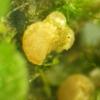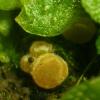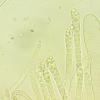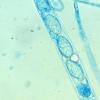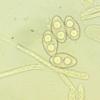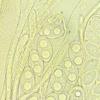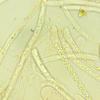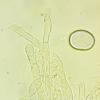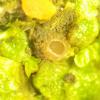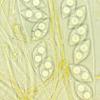
18-12-2025 17:23
 Bruno Coué
Bruno Coué
Bonjour,je serais heureux d'avoir votre avis sur c

18-12-2025 21:17
Pol DebaenstThe identification took me to Byssonectria deformi

18-12-2025 18:07
Margot en Geert VullingsThese plumes were found on rotten wood.They strong

17-12-2025 18:35
 Michel Hairaud
Michel Hairaud
Bonjour à tous/Hi to everyone I am passing along

15-12-2025 15:48
 Danny Newman
Danny Newman
Melanospora cf. lagenaria on old, rotting, fallen

15-12-2025 15:54
 Johan Boonefaes
Johan Boonefaes
Unknown anamorph found on the ground in coastal sa

15-12-2025 21:11
 Hardware Tony
Hardware Tony
Small clavate hairs, negative croziers and IKI bb

15-12-2025 07:09
 Danny Newman
Danny Newman
indet. Rutstroemiaceae sp. on unk. fallen leavesMc
 Hi All,
Hi All, I found this Octospora growing with liverworts and mosses while gardening. In the Octospora.de website it seems to agree closest with megapolitana but it is on clayey rather than sandy soil andthe paraphyses are not hooked.
Octospora cf megapolitana, Refail Fields, Pentraeth, Anglesey, 4/4/25 & 6/4/25
Apothecia solitary to gregarious, margin finely downy when young. Pinkish to orange. On rather compacted, clayey soil with liverworts and mosses.
Ascospores: 22x10, 22x11, 22x10.5, 21.5x12, 24x12, 22.5x11, 22x12, 22x12, 22x12, 22x11, 22x22x11, 21x11, 23x11.5, 21x12, 24x11.5, 22x11.5, 24x12, 25x12, 20x11, 22x12, 18.5x11, 19x11, 18.5x11, 21x11, 21x12, 24.5x10.5, 23.5x12, 21x11, 21.5x12, 20.5x11, 20x12, 21x11.
18-24.5x10-12
Ascospores ellipsoid, with two guttules. With evenly spaced hemispherical warts 0.5 wide and high. Occasionally with short ridges.
Asci (x400): 90x5, 85x6, 77x5, 83x7, 80x6, 103x7, 96x6, 90x7.5, 81x6, 84x8, 95x7, 74x6.5, 75x6.5, 70x7, 69x8, 71x7.5 175-240x12.5-20
Paraphyses: 7, 5, 5, 6, 6, 7, 6, 6, 7, 8, 7, 8 8, 12. Straight to curved, septate. Filled with pale yellow guttules towards the apex.
Excipular hyphae: Densely packed, with pale orange contents. Apices with amorphous substance.
Fine excipular hairs up to about 100x10.
Best wishes,
Charles.


Many thanks for your suggestion. O. bridei differs in having amazing, lemon-shaped spores. I should have mentioned that O. fissidentis also comes close and grows on clayey, shady spots like this taxon. It also has pinkish tones but doesn't appear to have excipular hairs.
Charles.



Nice collection, I think this is most likely either O. fissidentis, O. ithacaensis, or some closely related undescribed species (both have paraphyses with distinct VBs and can have margin with these fine excipular hairs). There seems to be a shoot of Fissidens on your last photo but the nearby liverwort could also be the host, so verifying infection would be necessary to be sure what species it is.
Few photos of the two species are here:
https://photos.app.goo.gl/BzhdePwW9SYJ2D333
https://photos.app.goo.gl/yRsswn7jY4JxnVKh6
Best wishes,
Lukas

Many thanks for your helpful comments and info. Sorry for the delayed reply, I suppose I had more or less given up on further replies! I agree that's it's close to fissidentis, agreeing in Fb colour and ascospore ornamentation. What swayed more towards megapolitana was the larger ascospore size of this taxon but, as you say, it might be undescribed. I think I may have enough material for DNA extraction.
Best wishes,
Charles.


Thanks for your suggestion. I tend to go more with fissidentis because of the pinkish colour of the apothecia and also because they were never actually seated on the liverwort thallus. All the apothecia I found (in more than one spot in the garden) were associated with both liverworts and sparse mosses. I imagine that proving the association would be quite tricky. I'm still looking out for more apothecia but haven't found any recently.
Best wishes,
Charles.

